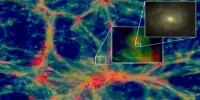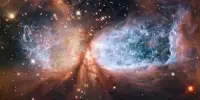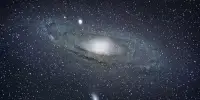An astronomer has offered a likely Sun-like star as the source of the unexplained signal that occurred over 40 years ago after evaluating hundreds of stars in the area where the famed Wow! Signal originated. A recent report published in the International Journal of Astrobiology describes his most likely suspect. A narrowband radio signal was detected on August 15, 1977, at Ohio State University’s Big Ear radio telescope site.
After reviewing the data a few days later, astronomer Jerry Ehman detected the signal sequence, which lasted a whole 72 seconds. He merely scrawled “Wow!” in the margin next to the printout, and the perplexing signal was given a moniker that would last for at least the next 43 years. The signal has eluded interpretation thus far, despite several attempts. Researchers hypothesized that it was a comet traveling across the region where Big Ear was listening, only to be thoroughly debunked two days later by the team who discovered the Wow!
Instead of the suddenly cut-off signal that was received, a comet would have created a diffuse signal considering the enormous region comets cover. The signal has sparked conjecture in the “aliens are out there” group, and rightfully so. There has never been another signal like it before or after. It was in a frequency range around the hydrogen line, which is largely free of background noise, making it an excellent region to choose if humanity ever tried to speak with other civilizations.
Furthermore, the researchers concluded it was a viable contender for alien life. “The ‘Wow!’ signal is very indicative of alien intelligent origin,” Ohio State University Radio Observatory director John Kraus stated in a letter to Carl Sagan in 1994, a man you don’t want to disgrace with wacky science in front of if you’re an astronomer. In the new research, astronomer Alberto Caballero scanned the European Space Agency’s Gaia data – a database of over 1 billion stars – for stars in the signal’s vicinity that are comparable to our own, with the goal of narrowing the search down to stars that may house an exoplanet with life potential.
This sort of search wasn’t meant to figure out exactly what it is, such as if it came from a natural source, but rather to limit down the possibilities if it came from an extraterrestrial culture. Caballero narrowed the contenders down to one star, as he demonstrates in a video on his popular YouTube website The Exoplanets Channel and in his study.
He noted in the study, “The only probable Sun-like star in the whole Wow! Signal zone appears to be 2MASS 19281982-2640123.” “Despite the fact that this star is too far away to send any response in the form of a radio or light broadcast, it might be an excellent target for exoplanet studies.” In a video, he continued, “One of those stars is quite near to the distance with the highest possibility of there being an alien civilisation.” “This star is barely 5 degrees hotter than the Sun, with a radius and brightness that are almost similar. It’s a great place to look for exoplanets that may be habitable.”
Given that the brightness of the stars was unknown, he also discovered 14 additional probable candidates in which he was less sure. We can’t rule out the possibility that the strange signal that has perplexed astronomers for four decades isn’t a human-made signal – remember when another mysterious signal turned out to be a microwave oven? – Or that it’s coming from an as-yet-unidentified source. However, taking a closer look at the stars Caballero has recognized wouldn’t hurt.















